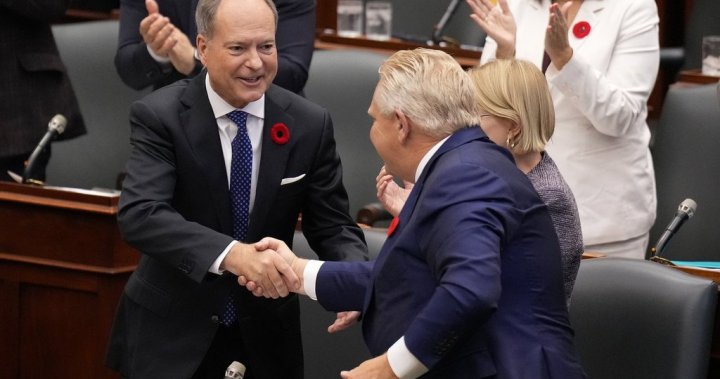In a decisive move to bolster Ontario’s manufacturing sector, Finance Minister Peter Bethlenfalvy unveiled a significant expansion of the province’s manufacturing tax credit during Thursday’s budget announcement. This strategic enhancement aims to fortify the competitive edge of Ontario’s manufacturers amid escalating global economic headwinds and intensifying international competition.
The expanded Regional Opportunities Investment Tax Credit, previously confined to specific geographical areas, will now extend across the entire province—a watershed moment for Ontario’s manufacturing landscape. Under the revamped framework, manufacturers throughout Ontario can claim a substantial 10 percent refundable tax credit against qualifying investments, potentially accelerating capital expenditure in a sector that has traditionally served as the backbone of the provincial economy.
“We’re extending the Regional Opportunities Investment Tax Credit to all of Ontario, ensuring every region can benefit from manufacturing growth,” Bethlenfalvy stated during his budget presentation at Queen’s Park. “This expansion represents our commitment to creating high-quality jobs and economic resilience throughout the province.”
The financial implications of this policy shift are significant. The provincial government has allocated approximately $315 million over the next three years to fund this initiative, demonstrating a substantial commitment to manufacturing revival. Industry analysts have noted that this investment could potentially generate thousands of new manufacturing positions while helping to shore up existing operations that have faced pressure from international competitors with lower production costs.
For manufacturers like Kierston Industries in Hamilton, the expanded tax credit comes as welcome relief. “This credit gives us the confidence to proceed with our $12 million expansion that we’ve been contemplating for nearly two years,” said Maria Patel, CEO of Kierston. “The 10 percent credit substantially improves our return on investment calculations and makes the decision much easier in the current high-interest rate environment.”
The timing of this expansion aligns with broader economic challenges facing Ontario’s manufacturing sector. Recent data from Statistics Canada indicates that manufacturing employment in the province has declined by approximately 3.2 percent over the past year, highlighting the urgent need for policy intervention.
The tax credit expansion also addresses regional disparities that had previously been a point of contention. Toronto-based manufacturers, previously excluded from the regional credit, will now have access to the same benefits as their counterparts in less densely populated areas of the province. This leveling of the playing field has been praised by industry representatives who had long advocated for a more equitable approach.
Dennis Darby, president and CEO of Canadian Manufacturers & Exporters, described the move as “a significant step toward ensuring Ontario remains competitive on the global stage.” He added, “In today’s economic environment, manufacturers need every advantage possible to justify capital investments that lead to increased productivity and innovation.”
Critics, however, have questioned whether the tax credit expansion goes far enough. Opposition finance critic Catherine Fife suggested that the government should have considered a more substantial credit percentage, pointing to competing jurisdictions that offer more generous incentives. “While we welcome this expansion, we must recognize that other regions globally are offering credits of 15 to 20 percent,” Fife noted during her response to the budget.
Environmental advocates have also weighed in, expressing hope that the tax credit will accelerate investment in greener manufacturing technologies. “We’re cautiously optimistic that manufacturers will use this opportunity to invest in more sustainable production methods,” said Jennifer Keesmaat, urban planner and environmental policy analyst. “The government should consider adding sustainability criteria to maximize the environmental impact of these investments.”
The expanded tax credit comes at a pivotal moment for Ontario’s economy, which faces challenges from rising interest rates, labor shortages, and global supply chain disruptions. Manufacturing, which accounts for approximately 12 percent of the province’s GDP, remains a crucial sector for Ontario’s economic resilience and future growth prospects.
As Ontario manufacturers begin to incorporate this expanded tax credit into their investment planning, the broader question remains: Will this policy adjustment be sufficient to spark a manufacturing renaissance in a province striving to maintain its industrial heritage while embracing the technologies of tomorrow?























